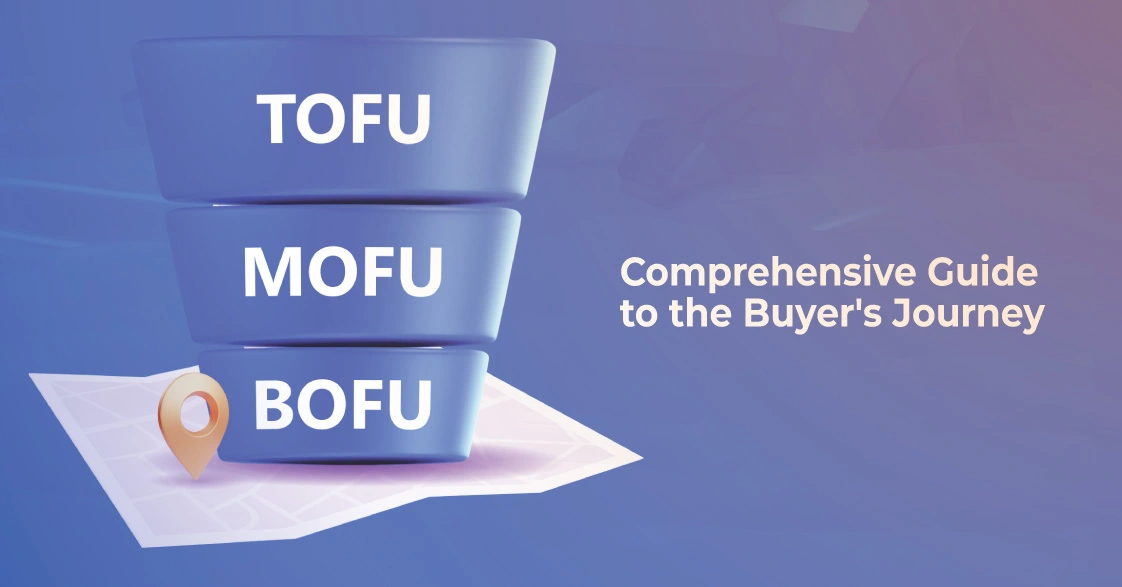ToFu, MoFu, and BoFu: A Comprehensive Guide to the Buyer's Journey

Understanding the buyer's journey is crucial in any marketing strategy, and the concepts of ToFu (Top of the Funnel), MoFu (Middle of the Funnel), and BoFu (Bottom of the Funnel) provide a structured approach to effectively guiding leads through the sales funnel. An extended discussion of these stages is enriched with practical insights and examples.
Top of the Funnel (ToFu): The Awareness Stage
At the Top of the Funnel (ToFu) stage, the primary goal is to draw a broad audience and create awareness. This stage brings in many leads, but only a fraction will convert into customers. Most are still exploring their options and may need to do more with your brand.
What Happens at ToFu?
Leads at this stage are aware of a potential problem but are still determining how to solve it. They are researching solutions, comparing options, and gathering information. It's essential to tread lightly—don't push for a sale too soon. For example, you wouldn't propose marriage on the first date, so trying to sell aggressively at this stage can alienate your leads.
What To Do?
Focus on building trust and credibility by delivering valuable, educational content that informs and engages. Help your audience understand their problem and explore possible solutions without overwhelming them.
Types of Content for ToFu:
- Blog Posts: Create engaging and informative articles addressing common pain points. Example: A fitness brand might write a blog titled "5 Reasons Why You're Not Losing Weight Despite Working Out."
- Research Reports: Share in-depth insights that establish your authority. Example: An SEO company can release a report on "The Latest Google Algorithm Changes and What They Mean for Your Business."
- E-books: Offer downloadable guides with actionable advice. Example: A Marketing firm could provide an e-book on "The Decagon Code of Marketing Mistakes."
- White Papers: Publish detailed documents analyzing industry-specific problems and trends.
Example: A tech company could release a white paper on "The Role of AI in Transforming Customer Experience."
Middle of the Funnel (MoFu): The Consideration Stage
The middle of the funnel (MoFu) is where leads begin to understand their problem more clearly and actively seek solutions. They've moved past the initial awareness stage and are now exploring various ways to address their needs.
What Happens at MoFu?
At this stage, leads are still being prepared to evaluate specific vendors but are focused on researching potential solutions. Your job is to nurture trust further without pressuring them into a sale. When they move to the bottom of the funnel, they should understand why your solution is the best fit.
What To Do?
Offer in-depth, problem-solving content that helps leads weigh their options and understand the value of your solution.
Types of Content for MoFu:
- Comparison Guides: Provide guides comparing solutions rather than vendors. Example: A software company might create a guide titled "On-Premise vs. Cloud Solutions: Which Is Right for Your Business?"
- Videos: Use engaging video content to explain complex topics. Example: A skincare brand could create a video on "The Science Behind Retinol and Its Benefits for Anti-Aging."
- Podcasts: Share industry insights or expert interviews. Example: A digital marketing agency could host a podcast discussing "Emerging Trends in SEO for E-Commerce."
- Webinars: Conduct live or recorded webinars where leads can ask questions and interact with your team.
Example: A SaaS company could host a webinar on "Streamlining Team Collaboration with Cloud-Based Tools."
Bottom of the Funnel (BoFu): The Decision Stage
The Bottom of the Funnel (BoFu) is where leads are highly qualified and ready to purchase. They've researched, defined their problem, and compared multiple solutions. Now, it's your opportunity to convert them into customers.
What Happens at BoFu?
At this stage, leads know who you are, what you offer, and what differentiates you from competitors. They are now evaluating vendors and making their final decision. It's crucial to adopt a consultative approach and provide the final push needed for conversion.
What To Do?
Deliver actionable, personalized content that removes doubts and builds confidence in your brand.
Types of Content for BoFu:
- Case Studies: Showcase real-world examples of your solution's
impact.
Example: A marketing agency could present a case study titled "How We Increased E-Commerce Sales by 200% for a Local Retailer." - Vendor Comparisons: Create transparent comparisons highlighting
your unique strengths.
Example: A CRM company might compare its platform to that of competitors, focusing on usability and cost-effectiveness. - Live Demos: Offer one-on-one product demonstrations to showcase
features and benefits.
Example: A project management tool could conduct a live demo to walk prospects through task automation. - Trials: Provide free trials to let prospects experience your
offering firsthand.
Example: A subscription-based software company could offer a 14-day free trial. - Consultations: Offer personalized consultations to address
specific concerns.
Example: A fitness coach could provide a free consultation to design a customized workout plan.
The Importance of Aligning Content with the Funnel
Aligning your content with the buyer's journey ensures that you are addressing the specific needs of your audience at every stage. Here's why this matters:
- ToFu content builds awareness and trust.
- MoFu content nurtures relationships and solidifies your credibility.
- BoFu content seals the deal and ensures conversions.
By delivering the right message at the right time, you create a seamless experience for your leads, ultimately driving better conversion rates and customer retention.

FAQs
Share
Table Of Contents
- Top of the Funnel (ToFu): The Awareness Stage
- Middle of the Funnel (MoFu): The Consideration Stage
- Bottom of the Funnel (BoFu): The Decision Stage
